Rhodes-Solutions Ch7 PDF

| Title | Rhodes-Solutions Ch7 |
|---|---|
| Course | Fluid Mechanics |
| Institution | University of Arkansas |
| Pages | 21 |
| File Size | 483.5 KB |
| File Type | |
| Total Downloads | 62 |
| Total Views | 141 |
Summary
Rhodes-Solutions Ch7...
Description
SOLUTION TO CHAPTER 7 EXERCISES: FLUIDIZATION EXERCISE 7.1: A packed bed of solid particles of density 2500 kg/m3, occupies a depth of 1 m in a vessel of cross-sectional area 0.04 m2. The mass of solids in the bed is 50 kg and the surface-volume mean diameter of the particles is 1 mm. A liquid of density 800 kg/m3 and viscosity 0.002 Pas flows upwards through the bed. (a) Calculate the voidage (volume fraction occupied by voids) of the bed. (b) Calculate the pressure drop across the bed when the volume flow rate of liquid is 1.44 m3/h. (c) Calculate the pressure drop across the bed when it becomes fluidized. SOLUTION TO EXERCISE 7.1: (a) Bed voidage (volume fraction occupied by the voids) is calculated from TextEquation 7.24: mass of solids in the bed, M = (1 − ε )ρ pAH Hence, voidage, ε = 1 −
50 = 0.5 2500 × 0.04 × 1
(b) Pressure drop across the bed when the flow rate is 1.44 m3/h: Assume firstly that the bed is not fluidized at this flow rate. Estimate the pressure drop from the Ergun Equation (Text-Equation 7.3): (1 − ε) ρf U 2 (− Δp) (1 − ε)2 μU + 1.75 = 150 2 ε3 ε 3 xsv xsv H Superficial liquid velocity, U =
1.44 = 0.01 m / s 0.04 × 3600
μ = 0.002 Pa.s; ε = 0.5; ρf = 800 kg/m3; H = 1.0 m; xsv = 10-3 m. Hence, (− Δp ) = 6560 Pa
(c) Check if the bed is fluidized: When fluidized, the apparent weight of the bed will be supported by the pressure difference. Hence (Text-Equation 7.2), Δp = H(1− ε)(ρ p − ρ f )g SOLUTION TO CHAPTER 7 EXERCISES: FLUIDIZATION
Page 7.1
(− Δp) = 1.0 × (1 − 0.5) × (2500 − 800) × 9.81= 8338.5 Pa. So the assumption in part (b) is correct and the answer to part (c) is 8338.5 Pa. EXERCISE 7.2: 130 kg of uniform spherical particles with a diameter of 50 μm and particle density
1500 kg/m3 are fluidized by water (density 1000 kg/m3, viscosity 0.001 Pas.) in a circular bed of cross-sectional area 0.2 m2. The single particle terminal velocity of the particles is 0.68 mm/s and the voidage at incipient fluidization is known to be 0.47. (a) Calculate the bed height at incipient fluidization. (b) Calculate the mean bed voidage when the liquid flow rate is 2 x 10-5 m3/s. SOLUTION TO EXERCISE 7.2: (a) Bed height at incipient fluidization.
From Text-Equation 7.24: mass of solids in the bed, M = (1− ε mf )ρ p AH mf Therefore, with M = 130 kg, εmf = 0.47, ρp = 1500 kg/m3 and A = 0.2 m2, H mf =
130 = 0. 818 m 0.2 × (1− 0.47) × 1500
Bed height at incipient fluidization, Hmf = 0.818 m. (b) Bed height when liquid flow rate is 2 x 10-5 m3/s: Use Richardson-Zaki equation (Equation 7.21), U = U T ε n To determine exponent n, calculate single particle Reynolds number, Rep at U=UT:
Re p =
U Tρf x (0.68 × 10−3 ) × 1000 × (50 × 10 −6 ) = μ 0.001
= 0.034, which is less than 0.3. Hence, n = 4.65 (Text-Equation 7.22) Hence, applying the Richardson-Zaki equation, 1 × 10
−4
SOLUTION TO CHAPTER 7 EXERCISES: FLUIDIZATION
= (0.68 × 10 − 3)ε 4.65
Page 7.2
which gives, ε = 0.6622 hence, bed voidage at a liquid flow rate of 2 x 10-5 m3/s is ε = 0.6622 EXERCISE 7.3:
130 kg of uniform spherical particles with a diameter of 60 μm and particle density 1500 kg/m3 are fluidized by water (density 1000 kg/m3, viscosity 0.001 Pas.) in a circular bed of cross-sectional area 0.2 m2. The single particle terminal velocity of the particles is 0.98 mm/s and the voidage at incipient fluidization is known to be 0.47. (a) Calculate the bed height at incipient fluidization. (b) Calculate the mean fluidized bed voidage when the liquid flow rate is 2 x 10-5 m3/s. SOLUTION TO EXERCISE 7.3: (a) Bed height at incipient fluidization.
From Text-Equation 7.24: mass of solids in the bed, M = (1− ε mf )ρ p AH mf
Therefore, with M = 130 kg, εmf = 0.47, ρp = 1500 kg/m3 and A = 0.2 m2, H mf =
130 = 0.818 m 0.2 × (1− 0. 47) × 1500
Bed height at incipient fluidization , Hmf = 0.818 m.
(b) Bed height when liquid flow rate is 2 x 10-5 m3/s: Use Richardson-Zaki equation (Equation 7.21), U = UT ε n To determine exponent n, calculate single particle Reynolds number Rep at U=UT: Re p =
U Tρf x (0.98 × 10−3 ) × 1000 × (60 × 10 −6 ) = 0.001 μ
= 0.0588, which is less than 0.3. Hence, n = 4.65 (Text-Equation 7.22) Hence, applying the Richardson-Zaki equation, 1 × 10 −4 = (0.98 × 10−3 )ε 4.65
SOLUTION TO CHAPTER 7 EXERCISES: FLUIDIZATION
Page 7.3
which gives, ε = 0.6121 hence, bed voidage at a liquid flow rate of 2 x 10-5 m3/s is ε = 0.6121
EXERCISE 7.4: A packed bed of solid particles of density 2500 kg/m3, occupies a depth of 1 m in a
vessel of cross-sectional area 0.04 m2. The mass of solids in the bed is 59 kg and the surface-volume mean diameter of the particles is 1 mm. A liquid of density 800 kg/m3 and viscosity 0.002 Pas flows upwards through the bed. (a) (b)
Calculate the voidage (volume fraction occupied by voids) of the bed. Calculate the pressure drop across the bed when the volume flow rate of liquid is 0.72 m3/h.
(c)
Calculate the pressure drop across the bed when it becomes fluidized.
SOLUTION TO EXERCISE 7.4: (a) Bed voidage (volume fraction occupied by the voids) is calculated from textEquation 7.24:
mass of solids in the bed, M = (1 − ε )ρ pAH Hence, voidage, ε = 1 −
59 = 0.41 2500 × 0.04 × 1
(b) Pressure drop across the bed when the flow rate is 0.72 m3/h: Assume firstly that the bed is not fluidized at this flow rate. Estimate the pressure drop from the Ergun Equation (Text-Equation 7.3): (1 − ε) ρf U 2 (− Δp) (1 − ε)2 μU + 1.75 = 150 2 xsv H ε3 ε 3 xsv Superficial liquid velocity, U =
0.72 = 0.005 m/s 0.04 × 3600
μ = 0.002 Pa.s; ε = 0.41; ρf = 800 kg/m3; H = 1.0 m; xsv = 10-3 m. Hence, (− Δp) = 7876 Pa SOLUTION TO CHAPTER 7 EXERCISES: FLUIDIZATION
Page 7.4
(c) Check if the bed is fluidized: When fluidized, the apparent weight of the bed will be supported by the pressure difference. Hence (Text-Equation 7.1), Δp = H(1− ε)(ρp − ρ f )g
(− Δp ) =1.0 ×(1 −0.41) × (2500 − 800 ) × 9.81 = 9839 Pa. So the assumption in part (b) is correct and the answer to part (c) is 9839 Pa. EXERCISE 7.5:
12 kg of spherical resin particles of density 1200 kg/m3 and uniform diameter 70 μm are fluidized by water (density 1000 kg/m3 and viscosity 0.001 Pas.) in a vessel of diameter 0.3 m and form an expanded bed of height 0.25 m. (a) Calculate the difference in pressure between the base and the top of the bed. (b) If the flow rate of water is increased to 7 cm3/s, what will be the resultant bed height and bed voidage (liquid volume fraction)? State and justify the major assumptions. SOLUTION TO EXERCISE 7.5:
(a) The frictional pressure loss is given by the force balance over the fluidized bed
(− Δp )A
= weight − upthrust = Mg − M
⎡ ρ ⎤ ρf g = Mg ⎢1 − f ⎥ ρp ⎢⎣ ρ p ⎥⎦
⎡ 1000 ⎤ 12 × ⎢1 − ⎥ × 9.81 ⎣ 1200 ⎦ Hence, (− Δp ) = = 277 .5 Pa. π( 0.3)2 4
Frictional pressure drop (-Δp) = 277.5 Pa. However, the measured pressure drop across the bed will include the hydrostatic head of the liquid in the bed. Applying the mechanical energy equation between the bottom (1) and the top (2) of the fluidized bed: 277.5 p1 − p 2 U12 − U 22 + + (z1 − z 2 ) = friction head loss = ρf g 2g ρf g
U1 = U2; z1 - z2 = - H = - 0.25 m.
SOLUTION TO CHAPTER 7 EXERCISES: FLUIDIZATION
Page 7.5
Hence, p1 - p2 = 2730 Pa. Difference in pressure between the base and the top of the bed = 2730 Pa. (b) Calculate bed height and mean bed voidage at a flow rate of 7 cm3/s. Apply Richardson-Zaki equation (Text-Equation 7.21), U = UT ε n Superficial liquid velocity, U =
volume flow rate 7 ×10 −6 =9.9 ×10 − 5 m/s = 2 cross sec tional area π0.3 4
To determine the single particle terminal velocity, UT, assume Stokes Law (TextEquation 2.13) x2 g ρp − ρf UT = 18μ
(
)
with x = 70 μm, ρp = 1200 kg/m3, pf = 1000 kg/m3 and μ = 0.001 Pa.s, UT = 5.34 x 10-4 m/s. To determine exponent n, calculate single particle Reynolds number Rep at U=UT. Re p =
U Tρf x (5.34 × 10− 4 ) × 1000 × (70 × 10 − 6 ) = μ 0.001
= 0.037, which is less than 0.3. Hence, n = 4.65 (Text-Equation 7.22) Hence, applying the Richardson-Zaki equation, 9.9 × 10
−5
= (5.34 × 10 −4 )ε 4.65
gives, ε = 0.696 From Equation 7.24, mass of solids in the bed, M = (1− ε )ρ pAH Hence, bed height, H =
12 ⎛ π0.3 2 1200 × (1 − 0.696 ) × ⎜ ⎜ 4 ⎝
⎞ ⎟ ⎟ ⎠
= 0.465 m.
EXERCISE 7.6:
A packed bed of solids of density 2000 kg/m3 occupies a depth of 0.6m in a cylindrical vessel of inside diameter 0.1m. The mass of solids in the bed is 5kg and SOLUTION TO CHAPTER 7 EXERCISES: FLUIDIZATION
Page 7.6
the surface-volume mean diameter of the particles is 300 μm. Water (density 1000 kg/m3 and viscosity 0.001 Pas) flows upwards through the bed. a) What is the voidage of the packed bed? b) Use a force balance over the bed to determine the bed pressure drop when fluidized. c) Hence, assuming laminar flow and that the voidage at incipient fluidization is the same as the packed bed voidage, determine the minimum fluidization velocity. Verify the assumption of laminar flow. SOLUTION TO EXERCISE 7.6:
(a) Cross-sectional area of bed, A =
π0.12 −3 2 = 7.85 × 10 m 4
From Equation 7.24, calculate bed voidage: mass of solids in the bed, M = (1 − ε )ρ pAH Hence, voidage, ε = 1 −
5 = 0.4692 2000 × 7.85 × 10 −3 × 0.6
(b) Force balance on bed. Apply Text-Equation 7.2: Δp = H(1− ε)(ρ p − ρ f )g
(− Δp) = 0.6 × (1 − 0. 4692) × (2000 − 1000)× 9.81 = 3124 Pa. Pressure drop across the bed when fluidized = 3124 Pa. (c) Assuming laminar flow through the bed, we apply only the laminar component of the Ergun equation.
Hence,
(− Δp) (1 − ε)2 μU = 150 2 H ε 3 x sv
With (− Δp ) = 3124 Pa ; μ = 0.001 Pa.s; ρf = 1000 kg/m3; H = 0.6 m; xsv = 300 x 10-6 m, and assuming the voidage of the bed at minimum fluidization is equal to the packed bed voidage, ε = 0.4692 then: U = Umf = 1.145 x 10-3 m/s SOLUTION TO CHAPTER 7 EXERCISES: FLUIDIZATION
Page 7.7
Check Reynolds number for use of laminar flow in packed bed. U ρ x Re ′ = mf f sv = 0.647, which is less than 10, the nominal upper limit for laminar μ(1 − ε ) flow. Hence the assumption of laminar flow is justified and Umf = 1.145 mm/s.
EXERCISE 7.7:
A packed bed of solids of density 2000 kg/m3 occupies a depth of 0.5m in a cylindrical vessel of inside diameter 0.1m. The mass of solids in the bed is 4kg and the surface-volume mean diameter of the particles is 400 μm. Water (density 1000 kg/m3 and viscosity 0.001 Pas) flows upwards through the bed. a) What is the voidage of the packed bed? b) Use a force balance over the bed to determine the bed pressure drop when fluidized. c) Hence, assuming laminar flow and that the voidage at incipient fluidization is the same as the packed bed voidage, determine the minimum fluidization velocity. Verify the assumption of laminar flow. SOLUTION TO EXERCISE 7.7:
(a) Cross-sectional area of bed, A =
π0.12 −3 2 = 7.85 × 10 m 4
From Text-Equation 7.24, mass of solids in the bed, M = (1− ε )ρ pAH Hence, voidage, ε = 1 −
4 2000 × 7.85 × 10
−3
× 0.5
= 0.4907
(b) Force balance on bed. Apply Text-Equation 7.2: Δp = H(1− ε)(ρ p − ρ f )g
(− Δp) = 0.5 × (1− 0.4907) × (2000 − 1000) × 9.81 = 2498 Pa. Pressure drop across the bed when fluidized = 2498 Pa. (c) Assuming laminar flow through the bed, we apply only the laminar component of the Ergun equation.
SOLUTION TO CHAPTER 7 EXERCISES: FLUIDIZATION
Page 7.8
Hence,
(− Δp) (1 − ε)2 μU = 150 2 H ε 3 x sv
With (− Δp ) = 2498 Pa ; μ = 0.001 Pa.s; ρf = 1000 kg/m3; H = 0.5 m; xsv = 400 x 10-6 m, and assuming the voidage of the bed at minimum fluidization is equal to the packed bed voidage, ε = 0.4907, then: U = Umf = 2.43 x 10-3 m/s Check Reynolds number for use of laminar flow in packed bed: U ρ x Re ′ = mf f sv = 1.907, which is less than 10, the nominal upper limit for laminar μ(1 − ε ) flow. Hence the assumption of laminar flow is justified and Umf = 2.43 mm/s. EXERCISE 7.8: By applying a force balance, calculate the incipient fluidizing velocity for a system
with particles of particle density 5000 kg/m3 and mean volume diameter 100μm and a fluid of density 1.2 kg/m3 and viscosity 1.8 x 10-5 Pas. Assume that the voidage at incipient fluidization is 0.5. If in the above example the particle size is changed to 2mm, what is Umf? SOLUTION TO EXERCISE 7.8: Force balance on bed. Apply Text-Equation 7.2: Δp = H(1− ε)(ρ p − ρ f )g
(− Δp) H
= (1− 0.5) × (5000 − 1.2) × 9.81 = 24519 Pa.
With such small particles in liquid we can assume laminar flow through the bed and so apply only the laminar component of the Ergun equation.
Hence,
(− Δp) (1 − ε)2 μU = 150 2 H ε 3 x sv
With (− Δp) = 24519 Pa ; μ = 1.8 x 10-5 Pa.s; ρf = 1.2 kg/m3; xsv = 100 x 10-6 m, and given that the voidage of the bed at minimum fluidization is voidage, ε = 0.5, then SOLUTION TO CHAPTER 7 EXERCISES: FLUIDIZATION
Page 7.9
U = Umf = 0.0454 m/s Check Reynolds number for use of laminar flow in packed bed. U ρ x Re ′ = mf f sv = 0.6 , which is less than 10, the nominal upper limit for laminar μ(1 − ε ) flow. Hence the assumption of laminar flow is justified and Umf = 4.54 cm/s.
For a particle size of 2 mm: Flow is unlikely to be fully laminar, so we will use the full Ergun equation: (1 − ε)2 μU (− Δp) (1 − ε) ρf U 2 = 150 + 1.75 2 ε3 ε 3 xsv H xsv From the force balance, (− Δp) = (1− 0.5) × (5000 − 1.2) × 9.81 = 24519 Pa. H Hence, with (− Δp ) H = 24519 Pa / m ; μ = 1.8 x 10-5 Pa.s; ρf = 1.2 kg/m3; xsv = 2 x 10-3 m, and given that the voidage of the bed at minimum fluidization is voidage, ε = 0.5, then 24519 = 1350Umf + 4200U2mf Solving, gives Umf = 2.26 m/s EXERCISE 7.9: A powder of mean sieve size 60 μm and particle density 1800 kg/m3 is fluidized by
air of density 1.2 kg/m3 and viscosity 1.84 x 10-5 Pas in a circular vessel of diameter 0.5 m. The mass of powder charged to the bed is 240 kg and the volume flowrate of air to the bed is 140 m3/hr. It is known that the average bed voidage at incipient fluidization is 0.45 and correlation reveals that the average bubble rise velocity under the conditions in question is 0.8 m/s. Estimate: (a) the minimum fluidization velocity, Umf (b) the bed height at incipient fluidization (c) the visible bubble flow rate (d) the bubble fraction (e) the particulate phase voidage (f) the mean bed height SOLUTION TO CHAPTER 7 EXERCISES: FLUIDIZATION
Page 7.10
(g) the mean bed voidage SOLUTION TO EXERCISE 7.9: (a) Minimum fluidization velocity, Umf:
Using the Ergun equation with a voidage of 0.45 at incipient fluidization (given in question): (1 − ε)2 μU (1 − ε) ρf U 2 (− Δp) = 150 3 2 + 1.75 H ε3 ε xsv xsv From the force balance, (− Δp) = (1− 0.45) × (1800 − 1.2) × 9. 81 = 9705.4 Pa / m. H Hence, with (− Δp) = 9705.4 Pa ; μ = 1.84 x 10-5 Pa.s; ρf = 1.2 kg/m3; xsv = 60 x 10-6 m, and given that the voidage, ε = 0.45, then: 2 9705.4 = 2.545 × 106 U mf + 0.2112 × 106 U mf
Solving, gives Umf = 3.8 x 10-3 m/s Using the Wen and Yu correlation gives Umf = 2.13 x 10-3 m/s. However, for gas fluidization the Wen and Yu correlation is often taken as being most suitable for particles larger than 100 μm, whereas the correlation of Baeyens, shown in Text-Equation 7.11, is best for particles less than 100 μm. U mf =
(ρp − ρf ) 0. 934 g0.934 x1.8 p 1110μ 0.87ρ g0.066
(Text-Equation 7.11)
(1800 − 1.2)0.934 9.810.934 (60 × 10−6 )1.8 1110(1.84 × 10−5 )0.87 (1.2)0.066 Umf = 2.73 x 10-3 m/s U mf =
(b) Bed height at incipient fluidization: Applying Text-Equation 7.24, with voidage at Umf = 0.45, mass of solids in the bed, M = (1 − ε mf )ρ p AH mf πD 2 π(0.5)2 2 = 0.1963 m = 4 4 hence, 240 = (1− 0.45 ) × 1800 × 0.1963 × H mf
Bed cross-sectional area, A =
SOLUTION TO CHAPTER 7 EXERCISES: FLUIDIZATION
Page 7.11
and so Hmf = 1.235 m (c) Visible bubble flow rate: From the two-phase theory, QB = (U − U mf )A
Superficial gas velocity, U =
Q ⎡ 140 ⎤ 1 = = 0.198 m / s A ⎣ 3600 ⎦ 0.1963
3 hence, Q B = (0.198 − 0.0038) × 0.1963 = 0.0381 m / s
(d) Bubble fraction:
QB , where UB is the mean From the Two-Phase theory, bubble fraction, ε B = AU B bubble rise velocity, given in the question as 0.8 m/s. This gives, bubble fraction = 0.245. (e) Particluate phase voidage: The Two-Phase theory assumes that the gas flow through the particulate phase is that
equivalent to the flow at incipient fluidization. We may assume therefore that the vodage of the particulate phase is the same as the bed voidage at incipient fluidization, εmf. Hence particulate phase voidage = 0.45. (f) Mean bed height: From the Two-Phase theory, one expression for bubble fraction (Text-Equation 7.28) is: H − H mf εB = , where H is the mean bed height. H With εB = 0.245 and Hmf = 1.235 m, mean bed height, H = 1.636 m. (g) Mean bed voidage: From Text-Equation 7.24, mass of solids in the bed, M = (1 −ε )ρ pAH 240 = 0.5848 Hence, voidage, ε = 1 − 1800 × 0.1963 × 1.636
Mean bed voidage = 0.5848. EXERCISE 7.10: A batch fluidized bed process has an initial charge of 2000 kg of solids of particle
density 1800 kg/m3 and with the size distribution shown below:
SOLUTION TO CHAPTER 7 EXERCISES: FLUIDIZATION
Page 7.12
size range number (i) 1
size range (micron) 15 - 30
mass fraction in feed 0.10
2
30 - 50
0.20
3
50 - 70
0.30
4
70 - 100
0.40
The bed is fluidized by a gas of density 1.2 kg/m3 and viscosity 18.4 x 10-5 Pas at a superficial gas velocity of 0.4 m/s. The fluid bed vessel has a cross-sectional area of 1 m2. Using a discrete time interval calculation with a time increment of 5 minutes, calculate: (a) the size distribution of the bed after 50 minutes (b) the total mass of solids lost from the bed in that time (c) the maximum solids loading at the process exit (d) the entrainment flux above the transport disengagement height of solids in size range 1 (15 - 30 μm) after 50 minutes. Assume that the process exit is positioned above TDH and that none of the entrained solids are returned to the bed. SOLUTION TO EXERCISE 7.10: (a) The size distribution of the bed after 50 minutes: First calculate the elutriation rate constants for the four size ranges under these
conditions from the Zenz and Weil correlation (Text-Equation 7.46). The value of particle size x used in the correlation is the arithmetic mean of each size range: x1 = 22.5 x 10-6 m; x2 = 40 x 10-6 m; x3 = 60 x 10-6 m; x4 = 85 x 10-6 m With U = 0.40 m/s, ρp = 1800 kg/m3 and ρf = 1.2 kg/m3 K*1∞ = 0.83 kg/m2s K*2∞ = 0.281 kg/m2s K*3∞ = 0.131 kg/m2s K*4∞ = 0.068 kg/m2s From Text-Equation 7.38, the entrainment rate for particles in size range i is d * R i = − (MB m Bi ) = K i∞ Am Bi dt
SOLUTION TO CHAPTER 7 EXERCISES: FLUIDIZATION
Page 7.13
* where K i∞ = elutriation rate constant MB = total mass of solids in the bed
A = area of bed surface m Bi = fraction of the bed mass with size xi at time t. and tota...
Similar Free PDFs
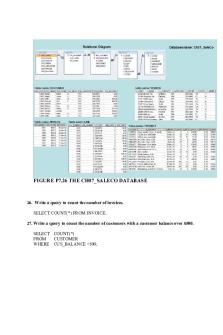
Ch7 - Ch7
- 11 Pages
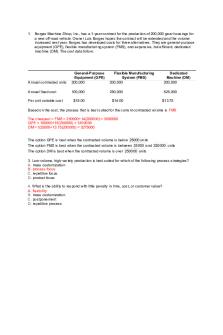
Ch7
- 4 Pages
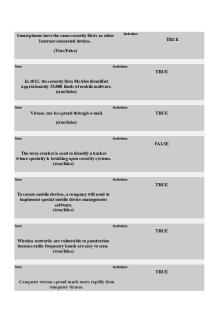
Testbank ch7
- 4 Pages
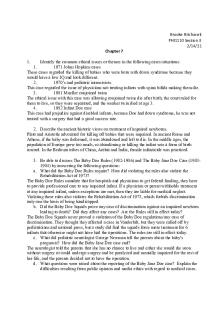
PHI1110 CH7
- 3 Pages
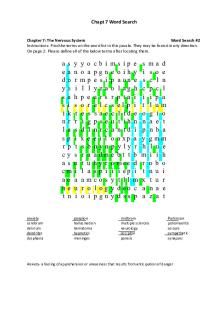
Ch7. Word Search
- 3 Pages

Ch7-practice Questions
- 5 Pages

CH7 review for final
- 2 Pages
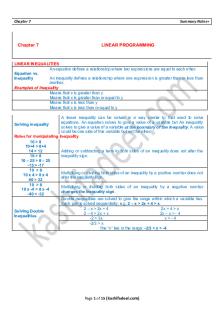
QM-Ch7-Copy - iiiiiiiiiiiiiiiiiiiiii
- 15 Pages

Writing Analytically - Ch7
- 4 Pages
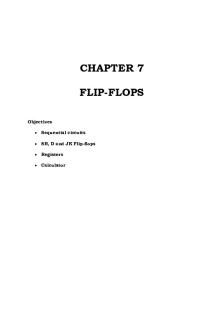
Ch7 - FLIP-FLOPS
- 12 Pages

Chapter 7 - CH7
- 18 Pages

Ch7 - test bank
- 56 Pages

International Finance ch7-9
- 95 Pages

Mishkin solutions ch7
- 6 Pages

CF1 Exercise Ch7 Solution
- 4 Pages

Ch 7 - ch7
- 2 Pages
Popular Institutions
- Tinajero National High School - Annex
- Politeknik Caltex Riau
- Yokohama City University
- SGT University
- University of Al-Qadisiyah
- Divine Word College of Vigan
- Techniek College Rotterdam
- Universidade de Santiago
- Universiti Teknologi MARA Cawangan Johor Kampus Pasir Gudang
- Poltekkes Kemenkes Yogyakarta
- Baguio City National High School
- Colegio san marcos
- preparatoria uno
- Centro de Bachillerato Tecnológico Industrial y de Servicios No. 107
- Dalian Maritime University
- Quang Trung Secondary School
- Colegio Tecnológico en Informática
- Corporación Regional de Educación Superior
- Grupo CEDVA
- Dar Al Uloom University
- Centro de Estudios Preuniversitarios de la Universidad Nacional de Ingeniería
- 上智大学
- Aakash International School, Nuna Majara
- San Felipe Neri Catholic School
- Kang Chiao International School - New Taipei City
- Misamis Occidental National High School
- Institución Educativa Escuela Normal Juan Ladrilleros
- Kolehiyo ng Pantukan
- Batanes State College
- Instituto Continental
- Sekolah Menengah Kejuruan Kesehatan Kaltara (Tarakan)
- Colegio de La Inmaculada Concepcion - Cebu